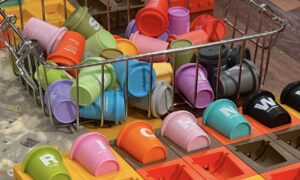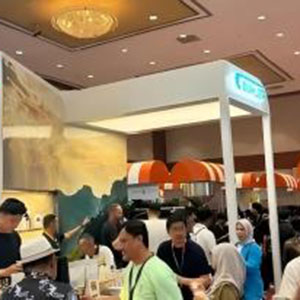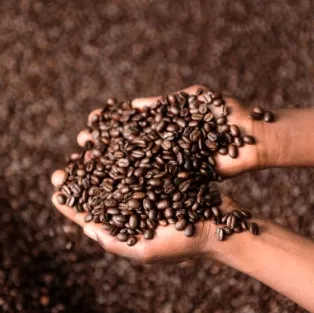 Introduction
Introduction
The history of instant coffee dates back to the early 20th century, or even earlier. However, it was in the 1930s that Nestlé revolutionized the market by introducing its best-selling soluble coffee, making it accessible to consumers worldwide. For many people in countries without a strong coffee culture, Nestlés instant coffee started their coffee journey.While coffee purists may argue that instant coffee doesn’t compare to freshly brewed coffee, its impact on the industry is undeniable. Even major brands like Starbucks and Nestlé have embraced the rapid rise of the soluble coffee market, recognizing its growing popularity among modern consumers in Europe, Asian and America.
Whether you’re a fan of instant coffee or not, there’s no denying its convenience. When there’s no coffee shop nearby or no time to brew a fresh cup—whether you’re traveling or in a rush—instant coffee offers a simple solution.Today, let’s explore how coffee beans are transformed into a bag of instant coffee, the differences between various types of soluble coffee, and the final steps before it reaches store shelves.
Why soluble coffees are popular again?
Instant coffee is no longer just a quick fix for caffeine cravings—it’s become a trendy, innovative product that’s winning over a new generation of coffee lovers. Thanks to advancements in production technology and creative marketing, instant coffee has shed its outdated reputation and is now a go-to choice for busy millennials and Gen Z consumers. Brands like Starbucks VIA and Nescafé Gold have elevated the game with freeze-drying techniques that preserve rich flavors and aromas, making it possible to enjoy a café-quality cup in seconds. Social media has played a huge role in its resurgence, with influencers showcasing creative ways to use instant coffee—think dalgonas (whipped coffee) that went viral on TikTok during the pandemic. Even high-end coffee shops are jumping on the trend, offering premium instant coffee blends for travelers and on-the-go professionals. Following current consumption trends and consumer concerns, more brands launched the health instant coffee which combined superfoods and coffee together.
 The Journey From Bean to Instant Coffee
The Journey From Bean to Instant Coffee
As for consumers, drinking soluble coffee usually take three steps: purchasing, opening, and pouring water. How about manufacturers? Have you ever thought about production challenges they face? Traditional coffees go through harvesting, selecting coffee beans, roasting, packaging, grounding and leaving the coffee bean waste behind. Powered coffees are extracted from the soluble and volatile contents of the beans without leaving any leftover.
- Selecting: Coffee beans are graded and classified based their quality, nature, and origin.After harvesting and preliminary processes, coffee beans were stored in the production countries for a while before exporting. Considering the temperature and humidity in origin countries, coffee beans might face the challenges of molds and parasites.
- Roasting: whether traditional coffee or granule coffee, they both begin with roasting. Green coffee beans would be roasted to darker color, uncovered their aroma and flavors.
- Grinding and Concentration: The roasted beans are ground into fine particles and brewed under high pressure to extract the soluble coffee compounds
- Drying Spray Drying:In this widely used method, the coffee extract is sprayed into a hot air chamber. The high temperature causes the water to evaporate rapidly, leaving behind fine coffee powder. This process is highly efficient and cost-effective but may result in some loss of volatile coffee flavors. For example, Nescafé Classic, Folgers Instant Coffee, Maxwell House. Many budget-friendly and mass-market instant coffee brands use spray-drying because it is cheaper and faster than freeze-drying. If you’re looking for a smoother, more aromatic instant coffee, you may want to explore the another method. Freeze Drying: This method involves freezing the coffee extract and then reducing the surrounding pressure to allow the frozen water to sublimate directly from solid to gas. This process preserves more of the coffee’s natural flavors and aromas, resulting in a higher-quality product. Such as Nescafé Gold, Starbucks VIA, Mount Hagen.
Instant Coffee Packaging Formats
| Pros | Cons | ||
| Glass Jars | One of the most traditional and widely recognized packaging formats for instant coffee. They are often associated with premium or high-quality instant coffee brands and are commonly used for home consumption. | Airtight seal preserves freshness; reusable and recyclable; ideal for home use, transparent for consumers to see containment | Heavier and more fragile; not ideal for travel or on-the-go consumption, higher costs for manufacturers |
| Cans | Cans are a durable and protective packaging option often used for bulk instant coffee. They are commonly found in supermarkets and are popular among consumers who prefer to buy larger quantities. | Cans provide excellent protection against light, moisture, and air, which helps maintain the coffee’s freshness and flavor.The airtight nature of cans ensures a longer shelf life compared to some other packaging formats. | Less eco-friendly compared to glass; can be bulky and take up more space. Cans take up more space in storage and transportation, which can increase logistical costs. |
| Stick Packs & Three-Side sealed bags | Small, single-serve packets that are lightweight and portable. They are particularly popular among travelers, office workers, and those who value convenience | Each pack contains just the right amount of coffee for one cup, eliminating the need to measure or scoop. Besides, they are easy to carry in bags, purses, or pockets, making them ideal for travel or on-the-go consumption. | Due to the individual packaging, stick packs can be more expensive per serving compared to bulk formats like jars or cans. |
| Plastic Container | Unique in outlook, customized, and more attractive to consumers. They usually shows in office and coffee lovers who pursue premium consumption experiences | Ideal choice for freeze drying coffee and building brand images. Lightweight but well sealed due to double protection (plastic lids and aluminum foil lids ) | Limited manufacturers of producing this premium materials, relatively higher R&D investments on designing customized containers |

How Saneu Can Help ?
As a leading manufacturer of coffee capsule filling and sealing machines and multi-lane machines for packaging powdered, granule, and liquid products, Saneu is at the forefront of innovation in the single-serve coffee package industry. Our state-of-the-art machinery ensures efficiency, precision, and high-quality production for stick, three-side-sealed bags, four-side-bag and exclusive designed containers. Whether you are a coffee producer looking to optimize your packaging solutions or an entrepreneur entering the instant coffee market, Saneu provides the expertise and technology to help your business succeed.
Common Questions About Packaging Instant Coffee
- Which machines are used in packaging instant coffee? Instant coffee is packaged using various machines, including stick pack machines, multi-lane packaging machines, and coffee capsule filling and sealing machines. These machines ensure precision, efficiency, and airtight sealing for maximum freshness.
- How does a coffee capsule filler work for instant coffee? A coffee capsule machine fills pre-formed capsules with both instant coffee or ground coffee, then seals them with aluminum or plastic lids. It ensures accuracy in filling weight and maintains product freshness.
- What is the best packaging option for instant coffee? The best packaging depends on your target market. Stick packs are great for convenience, glass jars for premium products, and plastic containers for a modern look. Our machines cater to all these packaging needs.
- How to choose the right packaging machine for my business? The right machine depends on your production scale, packaging format, and budget. Saneu offers customized solutions, whether you need single-serve stick packs, multi-lane packaging, or capsule sealing systems.
- What are the benefits of using Saneu’s packaging machines? Our machines offer high-speed production, precise filling, and superior sealing technology to maintain coffee quality and freshness. We provide tailored solutions for different instant coffee brands.
- Are Saneu machines suitable for both spray-dried and freeze-dried instant coffee? Yes! Our machines can handle both types of instant coffee, ensuring smooth filling and sealing processes for various packaging formats.
- Can Saneu help with custom packaging designs? Absolutely! We offer flexible packaging solutions with customizable shapes and branding options to make your instant coffee stand out in the market.




